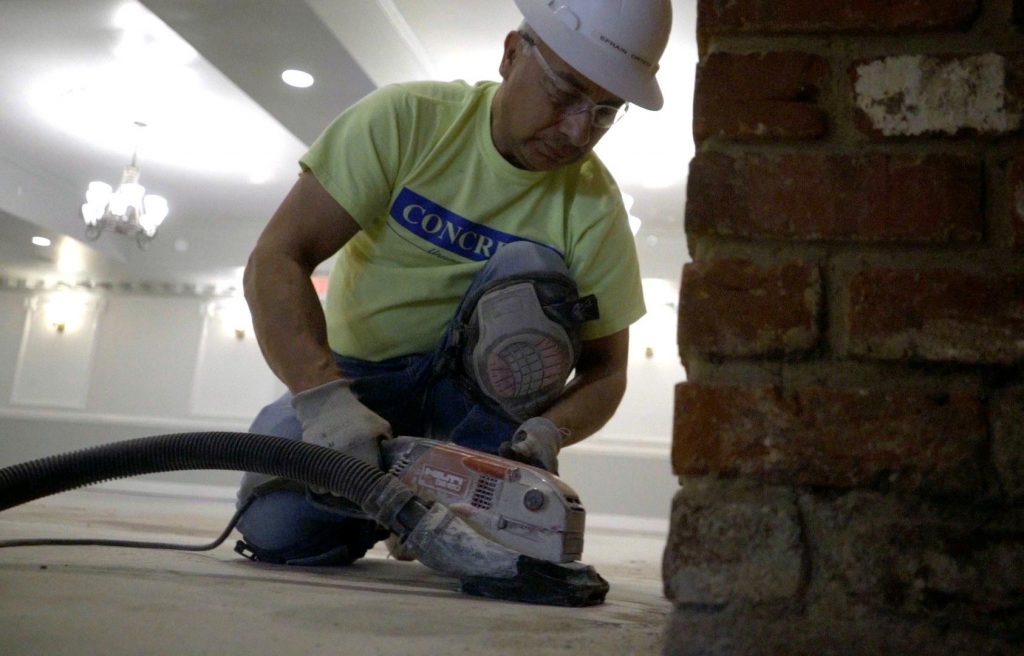3 Concrete Surface Preparation Techniques You Should Know

Considering various concrete preparation methods ensures you select the right one for your project.
Key Takeaways
- Concrete surface preparation is an essential step before applying a coating since new coatings won’t stick to existing adhesives
- Various preparation methods are worth your consideration, depending on the size and scope of the task
- All techniques have pros and cons to keep in mind when deciding
- Learning about each surface preparation method makes your decision easier
Surface preparation is a necessary first step when polishing or sealing a concrete floor inside a building. Adequately preparing the surface ensures coatings like epoxies, urethanes, acrylics, and polyureas can mechanically bond to the surface. Surface preparation should be the first phase because it isn’t possible after you polish.
There are multiple surface preparation techniques available, depending on what you want to accomplish and how the finished product will look. It’s best to consider each method and learn as much as possible before deciding.
When maintaining, restoring, or repairing a concrete floor, you should first know these three common concrete surface preparation techniques.
Start by grinding
Nearly every surface preparation job starts with some grinding because it’s excellent for removing existing coatings from concrete. Grinding is particularly effective if the current layer is thick or elastic in composition because they rely on abrasion rather than impact. The result is a more even prep job.
Concrete grinders typically even out the surface using a rotating disk engineered with diamond bits. There are multiple diamond tooling options, though, and the one you select will depend on the type of coating or glue, its thickness, the quality of the bond between the coating and the concrete, and the presence of other agents on the floor.
Grinding is also great for removing brittle material from the floor, such as when chunks of concrete are already breaking away. From there, you can repair the floor before applying a coating to finish it off.
You might grind the edges of the concrete before using another technique, too, because methods like shot blasting and hydroblasting aren’t as precise.
However, it’s worth noting that grinding comes with some drawbacks. Notably, it’s a far slower process than hydroblasting or shot blasting because the machines are relatively small, and you have to cover the floor’s entire surface area.
This technique is also limited in its application because it won’t grind inside any holes on the floor. If there’s a slight dip in the floor containing glue or another coating, the grinding head can’t get in there to remove it.
Grinding is the go-to for many floor restoration jobs and is helpful in many situations you’ll come across as you work.
Opt for shot blasting
One of the most popular surface preparation techniques on the market is shot blasting, which involves using a wheel to sling metal shot into the concrete. This shot produces a rough texture that’s perfect for coatings and overlays because it improves adhesion to the concrete.
Shot blasting cleans the concrete extremely well by breaking up the surface. It’s also helpful when removing paint or when cleaning inside holes that a grinder can’t reach.
Shot blasting machines use a vacuum as well, removing the dust and debris the machine creates before it can enter the room.
You will find a couple of drawbacks when using a shot-blasting machine. These devices are pretty large, making them somewhat challenging to maneuver in tight spaces, and it might not be possible to use shot blasting technology in some locations.
A shot blaster can’t reach a room’s edges, so you’ll still need to use a grinder on the edges while preparing a surface.
Overall, shot blasting is an excellent choice for many floors because of the speed and efficiency with which it operates. In fact, most surface preparation professionals use shot blasting for at least part of every large project they complete.
Hydroblasting is worth considering
Finally, you might consider hydroblasting when removing imperfections and loose concrete from some floors. It’s also effective at removing paint and other coatings.
Hydro blasting is similar to shot blasting, except this technique uses a highly pressurized water stream instead of shot. The result is a clean, dust-free, extremely quick, and efficient process.
The hydro blasting system is closed, so even though it uses water you won’t end up with excess moisture. An attached vacuum removes the water immediately, leaving behind a clean floor without any loose concrete.
A potential issue when using a hydroblasting system is that it’s almost too powerful for some applications. It will remove absolutely every loose piece of concrete from the floor, so you could end up with more repairs than you had anticipated before you started. While this is ultimately a positive feature because it will improve the floor’s overall quality, it could create extra work.
You’ll still need to grind the room’s edges when using hydroblasting because although it gets close, it can’t quite reach the edges the way a grinder can.
Preparing floors for polish or coatings
Applying polish or coatings to concrete floors protects the material and beautifies your building. However, the floor must be in good condition before sealing. Concrete that’s damaged or already has glue, paint, or another adhesive on it won’t take the new coating. As a result, the restoration process often begins with surface preparation. You’ll want to carefully research the various surface preparation techniques available to select the right option to meet your needs.
The team at Concreate brings a decade of industry experience and will ensure your concrete repair is completed in the most efficient and durable way possible. We will look at the various surface preparation techniques available and select one that will leave your floors in the best condition.
We know concrete. Connect with us today at thisinconcrete.com to learn about our surface preparation techniques. You can also listen to our recent podcast for more information on surface preparation and its intricacies.
